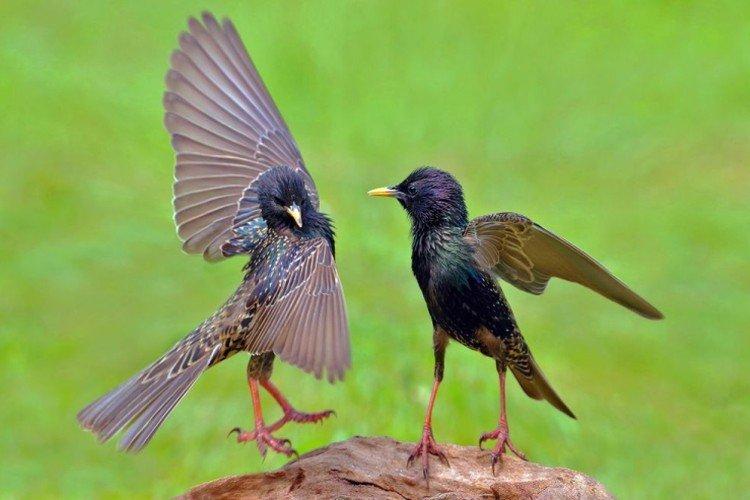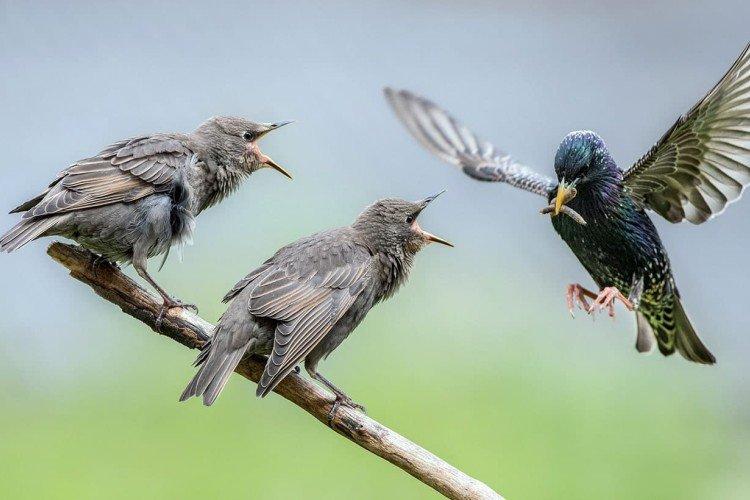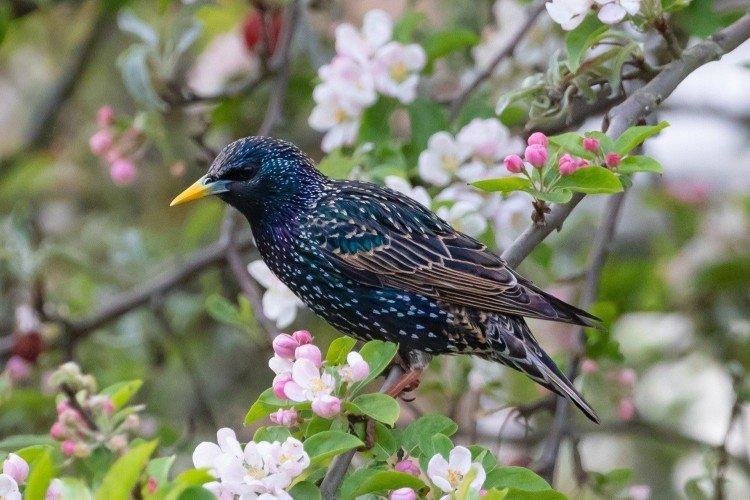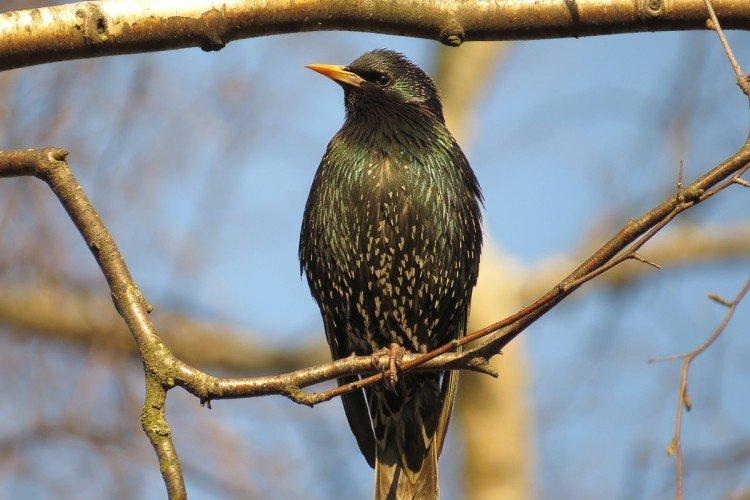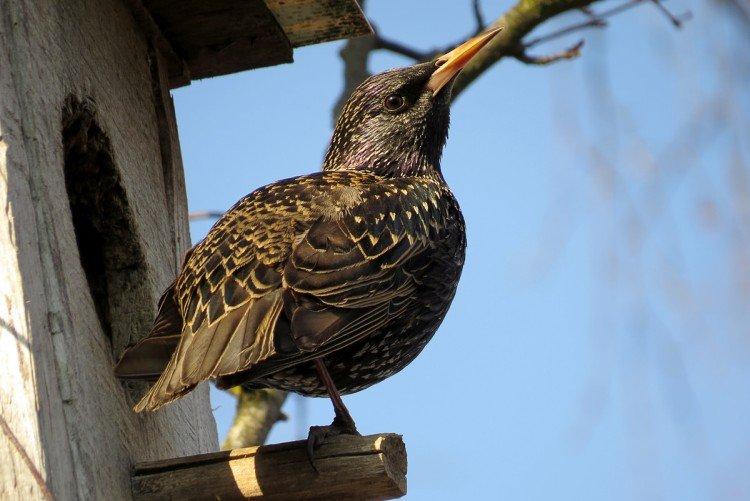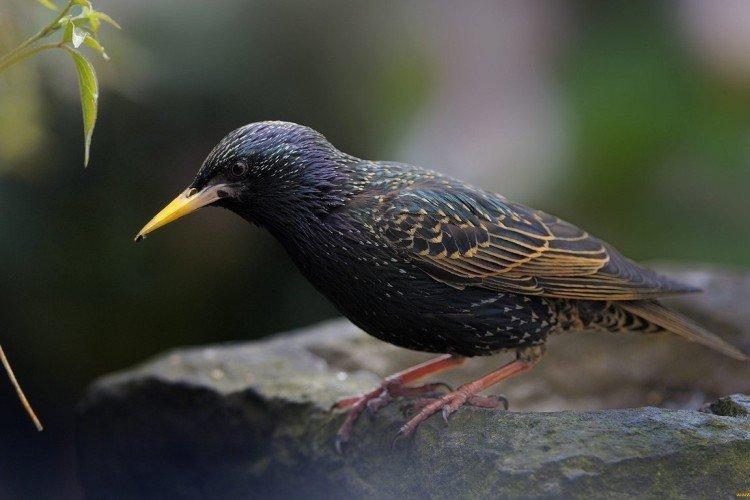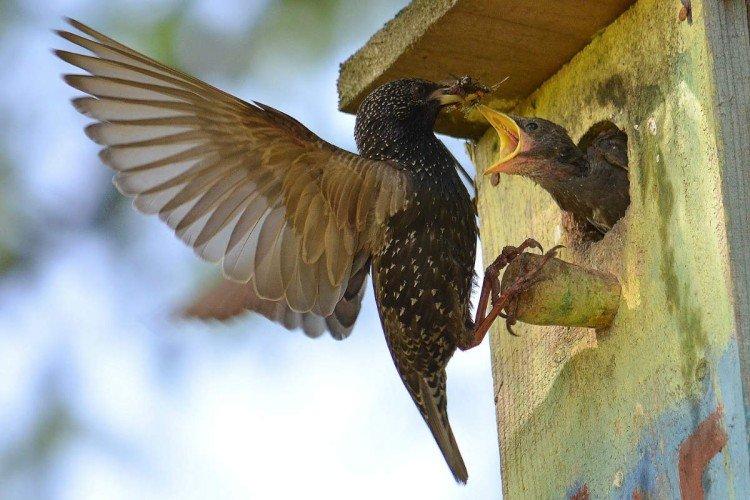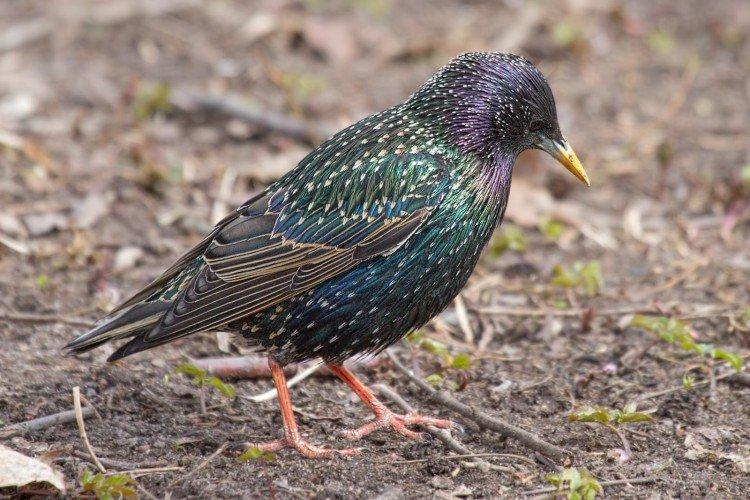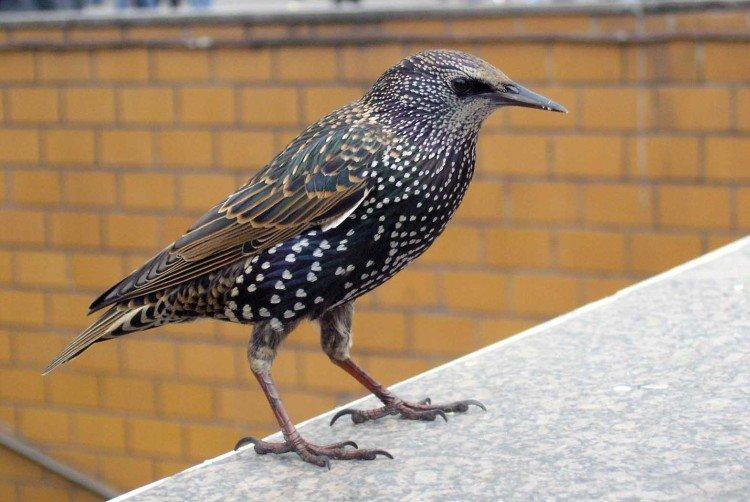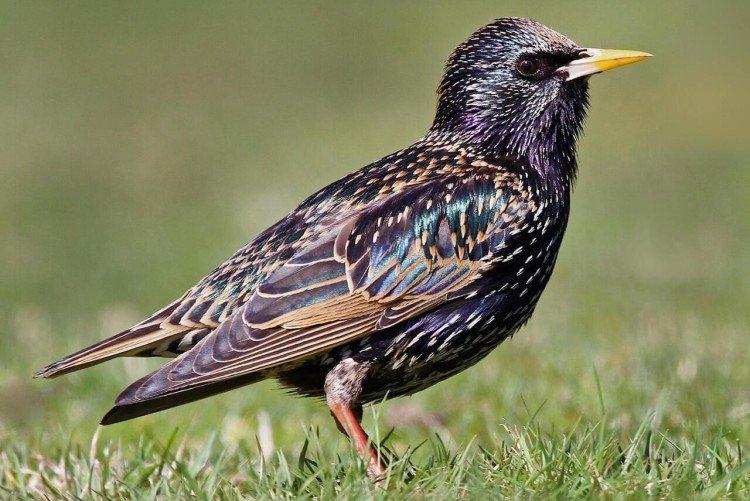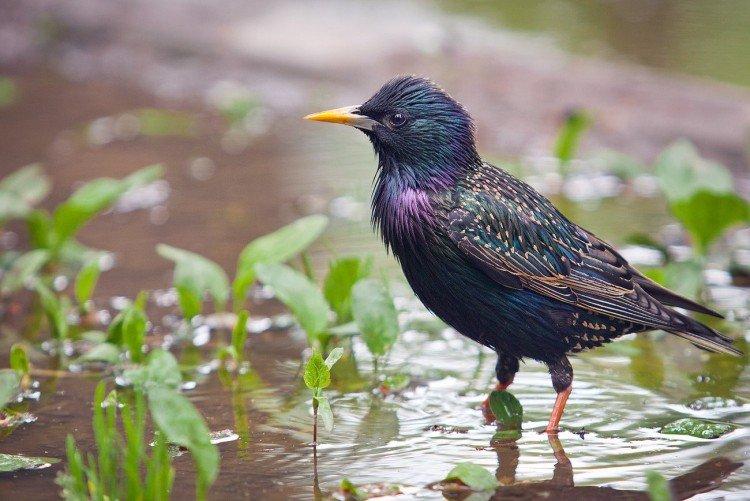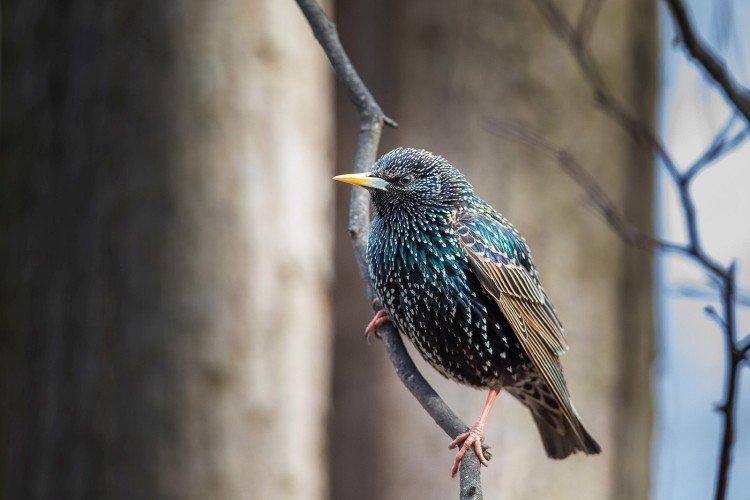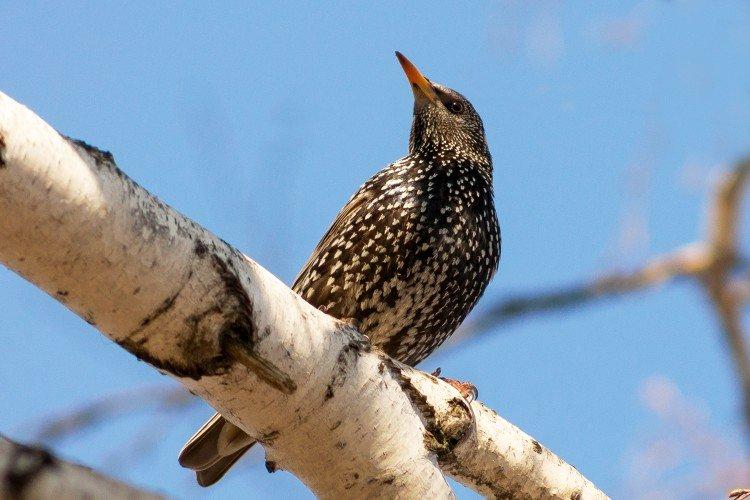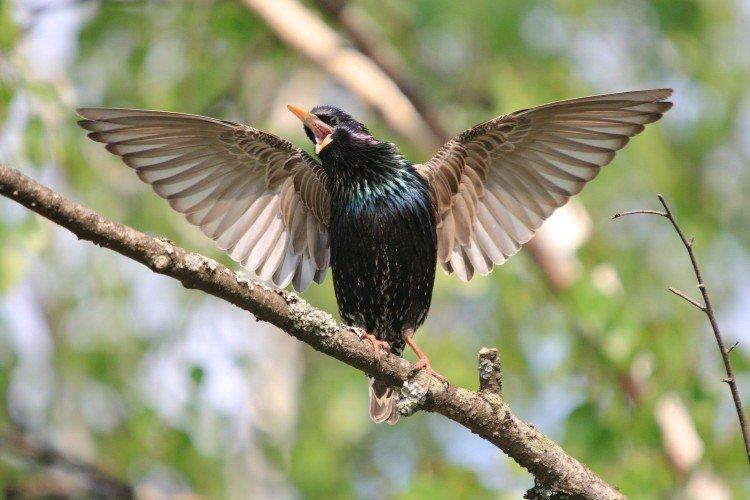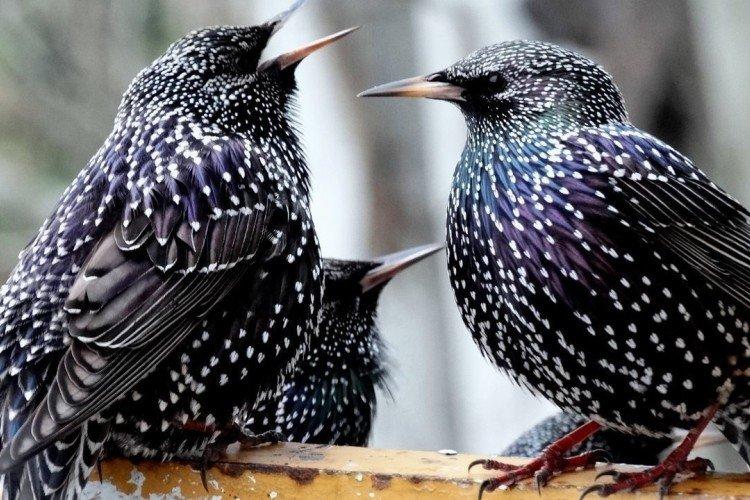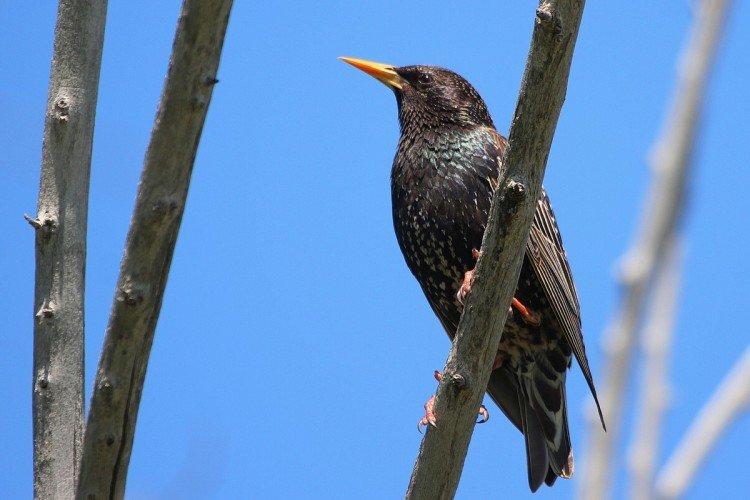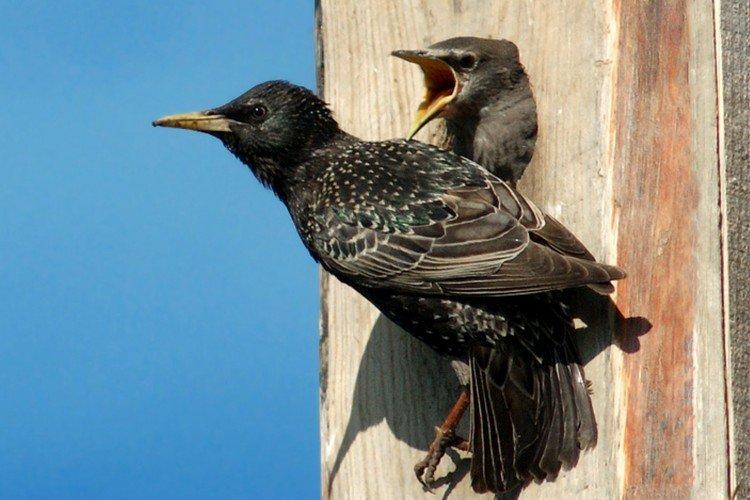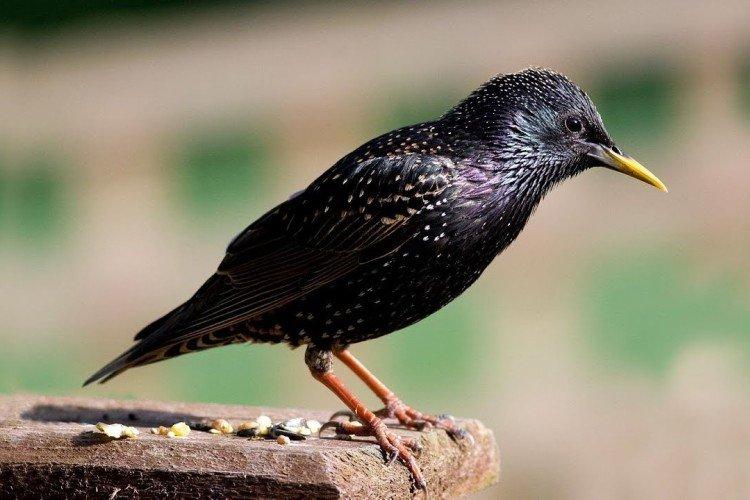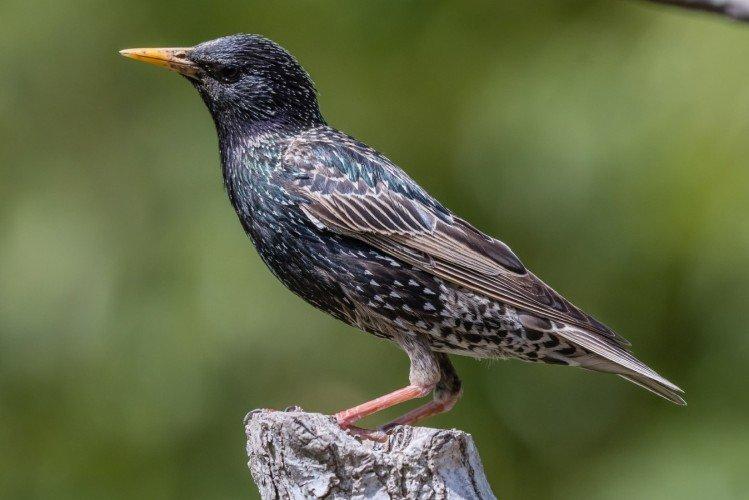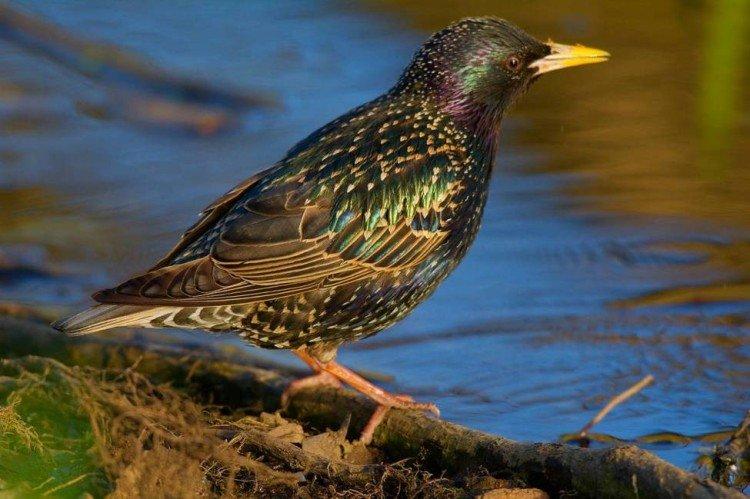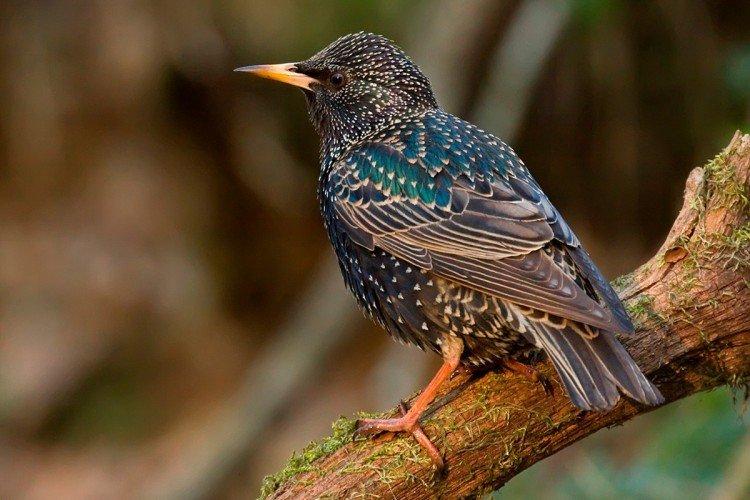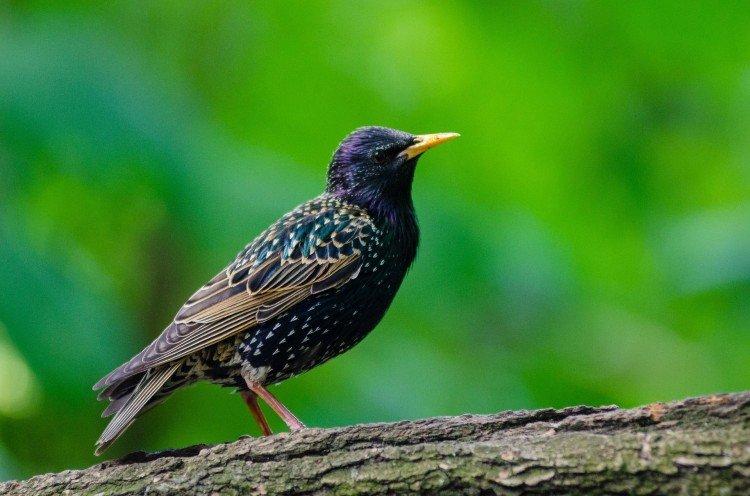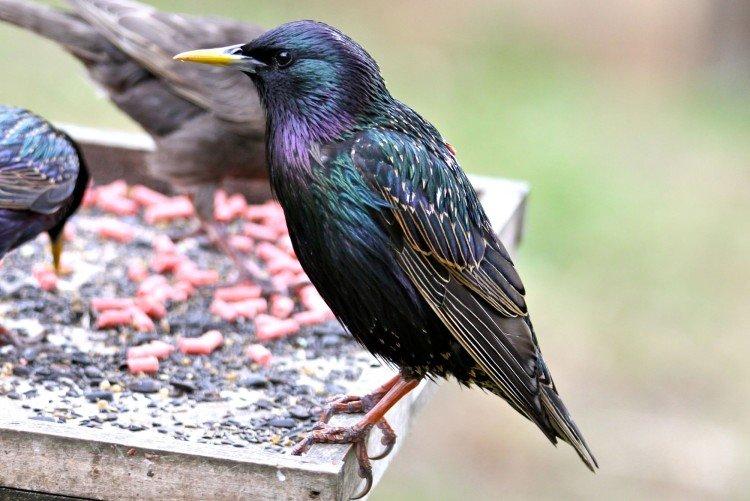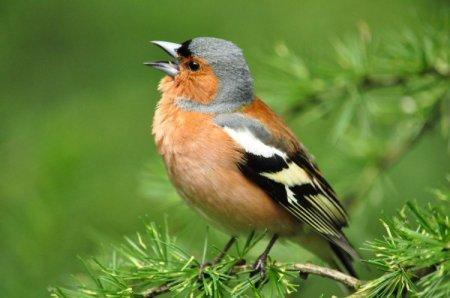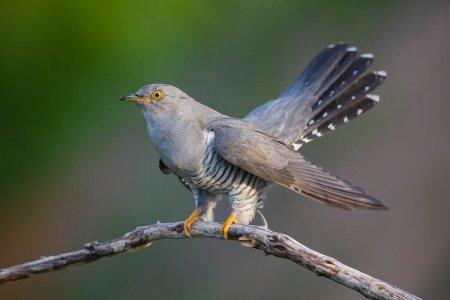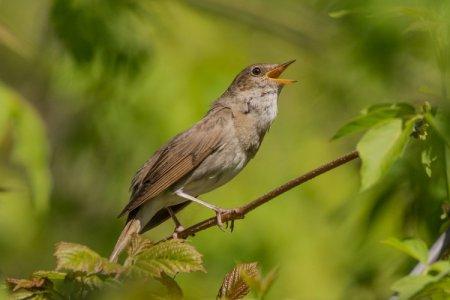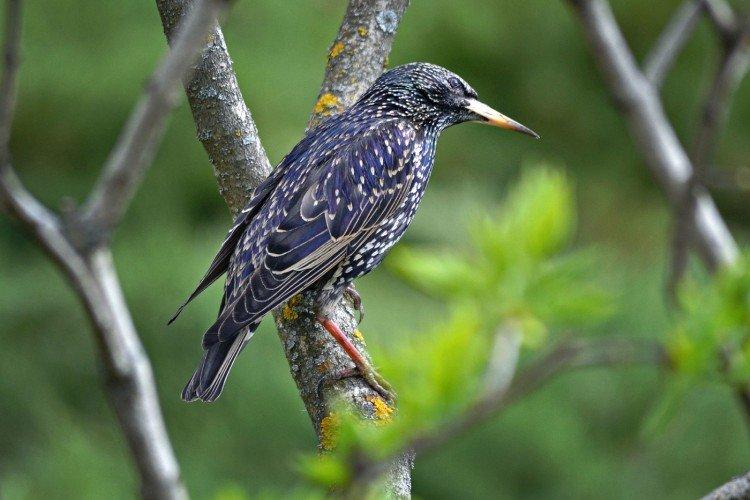
If you often come across a small, dark, but multi-colored bird with a sharp yellow beak in the city, this is a starling. From a distance, their plumage seems black, but up close you can see all the spots and overflows for a long time. Today we want to tell you a little more about this common bird!
general description
Starlings have a lot in common with blackbirds, but they can be easily distinguished by their habits, and also by their short tail. Small birds could be completely invisible, but their amazing metallic sheen immediately attracts attention.
Appearance
The plumage of starlings is dark, almost black, with chaotic light spots. The metallic sheen is by no means the specificity of the pigment, but the structural features of the feathers, which shimmer at different angles. In juveniles, these reflections are not so noticeable.
Starlings run well on the ground, unlike the same blackbirds. They have a thin sharp yellow beak, which becomes especially bright during the mating season. After it, it darkens almost to black.
The wingspan of a starling usually does not exceed 40 cm, and the length is up to 20-22 cm. One bird weighs up to 75 g, but at the same time their body is rather massive and strong due to proportions and structure. The starling's head is small and round, with the same round eyes. Paws - orange-red, thin but tenacious.
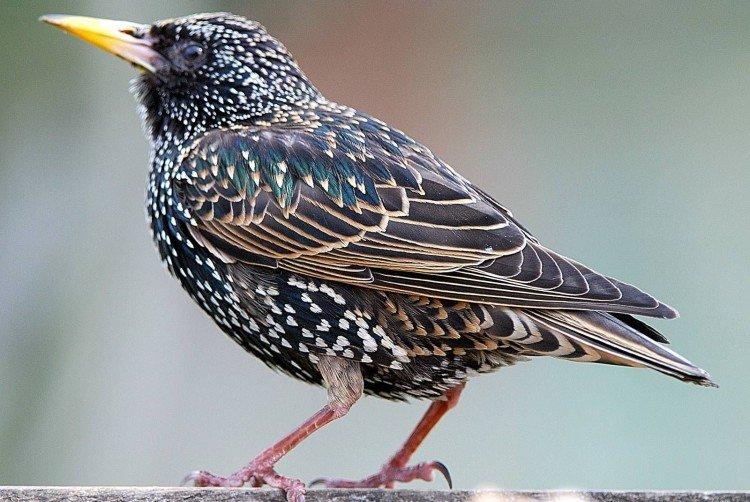
Singing
The starling is famous not so much for its singing as for its ability to imitate and imitate. He can repeat almost any sound and even pronounce words quite clearly. It's funny that starlings are very fond of copying a cat's meow and even use it during courtship rituals.
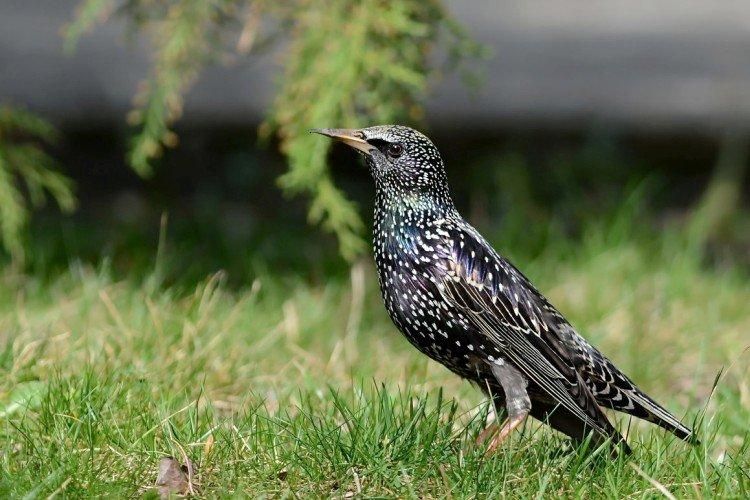
How many starlings live
Starlings are real long-livers against the background of their relatives. Even in the wild, they can live for 12 years, or even up to 19-20. They easily adapt to different conditions, and this also contributes to survival.
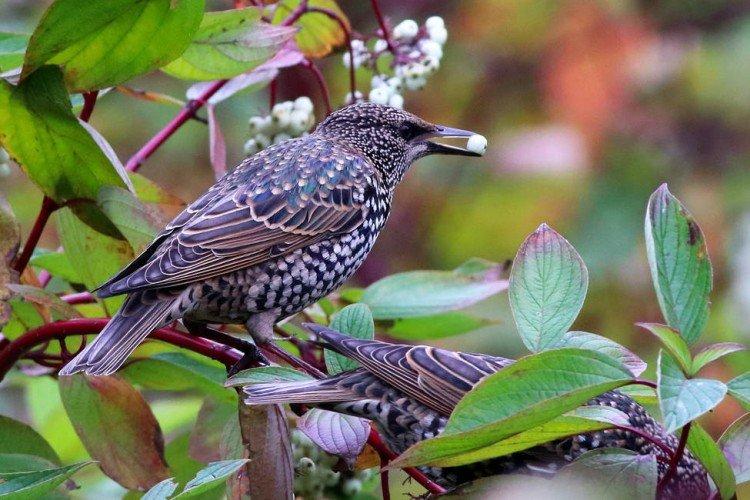
Starling species
Starlings are classified according to the region of their habitat, and in our latitudes mainly only the common and black nest. They are not very different from each other. In addition, outwardly they are still united by the ebb, only in blacks it is green and purple, and in ordinary ones it is blue and bronze.
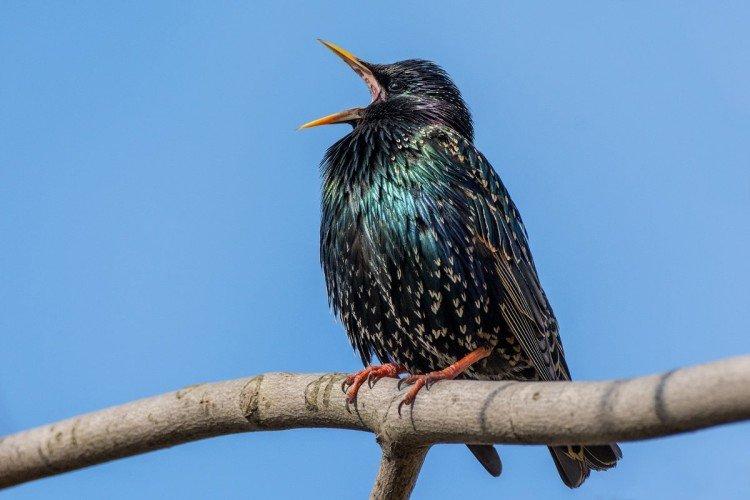
Starling lifestyle
Starlings are social, sociable, gullible and extremely intelligent. They are not afraid of people and easily settle even in large and noisy cities. But they just dislike deaf thickets, mountains and rocks.
Habitat
Starlings are found literally all over the planet, except in some regions of America. Somewhere they were always, but somewhere they were brought on purpose. For example, in Australia and New Zealand, starlings did not appear without human participation. But in America it did not work.
Starlings are friendly towards humans, but very aggressive towards other birds. There are cases when they drove out entire species of birds from their area. They are especially often at war with woodpeckers.
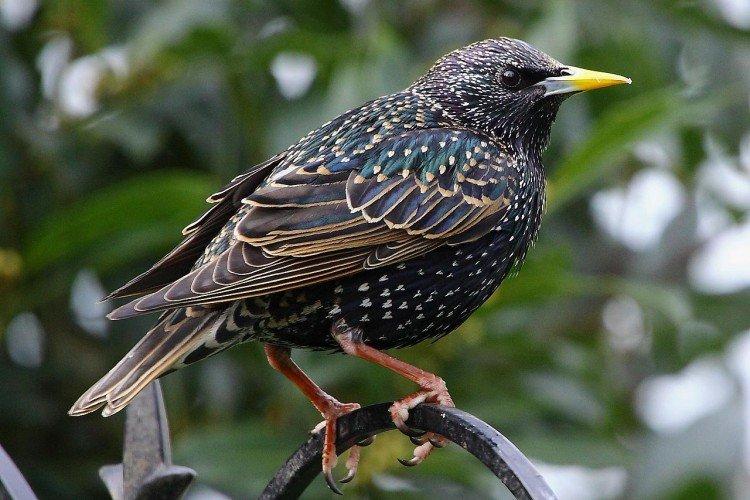
The diet
Starlings are completely and completely omnivorous, which in many ways allows them to survive almost anywhere. They feed on worms, snails, butterflies, larvae, grasshoppers and other insects. Flocks of starlings are capable of carrying out entire raids on fields and gardens, destroying everything in their path. They even masterly learned to open nuts and other shells with their beaks.
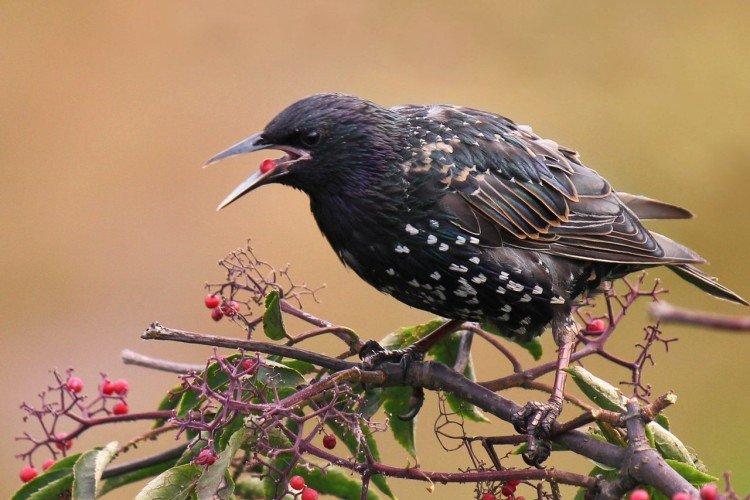
Wintering
Starlings from southern regions, including southern and western Europe, are sedentary. The rest are forced to fly south with the onset of cold weather in search of warmth and food. They return in early spring, and here the first problems begin. Heat-loving starlings may not survive severe frosts.
Communicable birds travel in the same large and friendly flocks. And only closer to the ground do they disintegrate in search of comfortable territories for life. The number of one such flock can reach up to a million individuals.
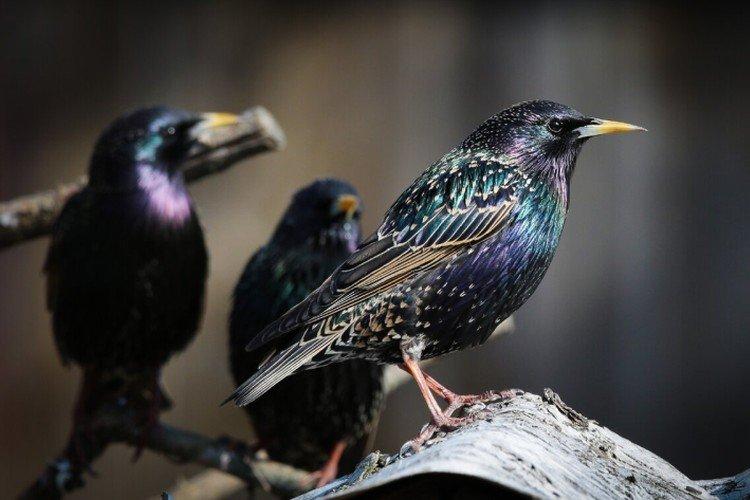
Keeping in captivity
Compared to other wild birds, the starling is fairly easy to tame. He can even be taught to imitate sounds. A spacious cage with a swimming pool and perches is a must. In food, they are almost omnivorous, and can eat meat, fruits, cottage cheese, vegetables, eggs and herbs. With the proper patience, even an adult starling can be tamed, and this is a real rarity.
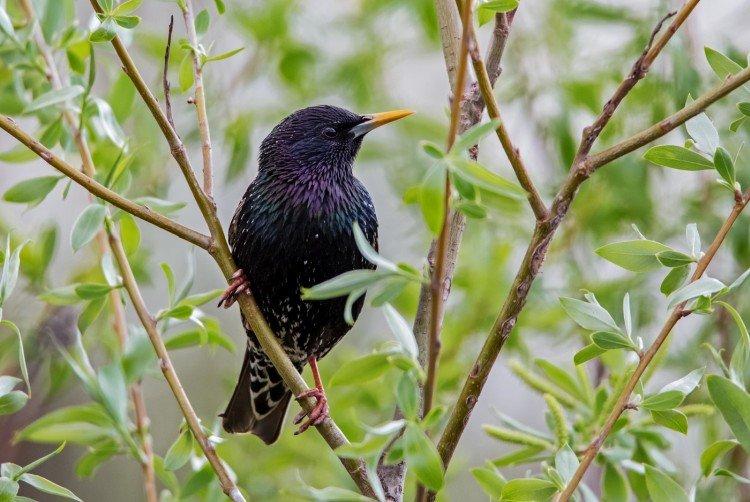
Breeding starlings
In the spring, male starlings return from wintering, actively divide the territory, look for nesting places and hone their vocal abilities. They prefer to build nests in hollows, which is why birdhouses have become popular. The newly-made couple builds the nest together.
In the season, females make up to three clutches, but because of the long break between them, pairs often break up and gather in new ones. One clutch contains up to 7 bluish eggs, which hatch after about 2 weeks. Both parents incubate and feed juveniles.
When the offspring appear, starlings are always near the nest and food is also obtained nearby. At first, they pick up soft foods, and gradually move on to coarser ones. After 3 weeks, chicks can leave the nest.
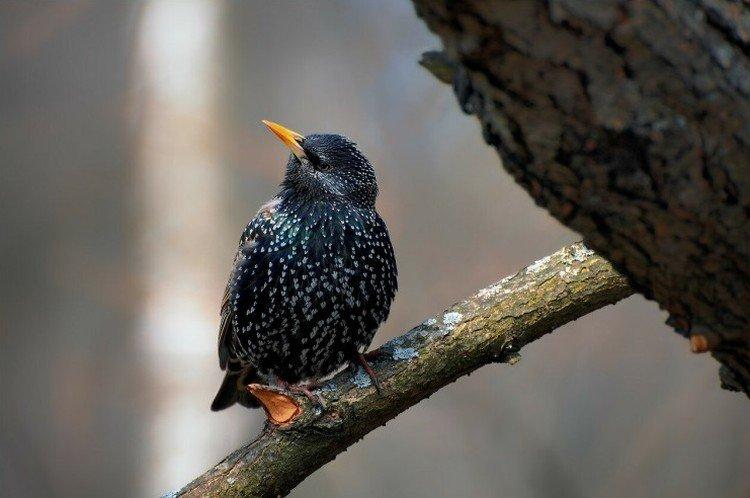
Natural enemies
In fact, starlings do not have many natural enemies. They are too nimble for animals. And to escape from birds of prey, they are helped by a unique flight path in flocks, unlike any other kind of equipment.
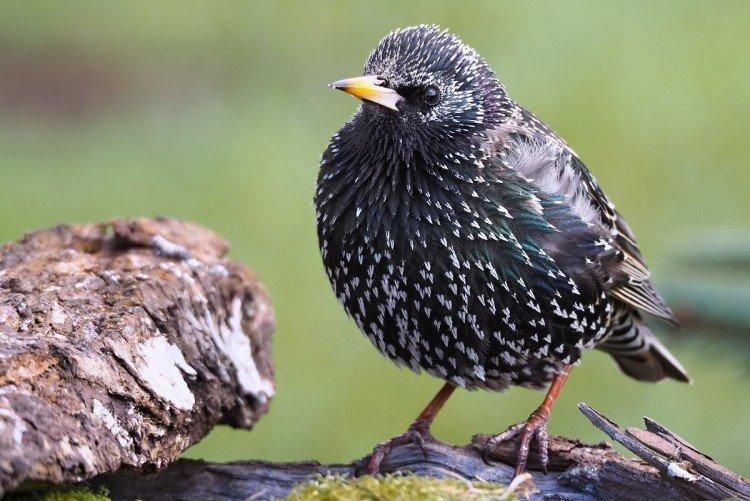
Harm from starlings
Starlings have ambiguous relationships with people. On the one hand, an intelligent bird can be a great companion. On the other hand, the damage to farmland from just one flock is truly devastating. They also create emergencies at airports. And also - they are driving out other useful birds from the inhabited territories.
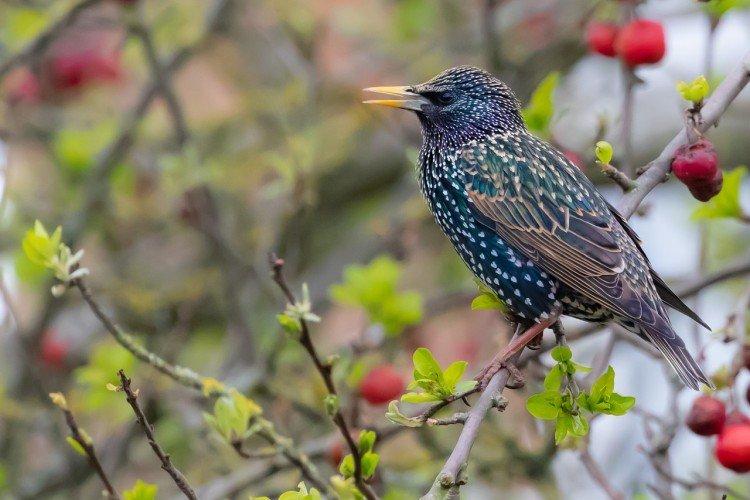
Starlings - photo
We often do not notice the beauty of what is constantly in front of our eyes. That's the same story with starlings. We hasten to correct the injustice!
